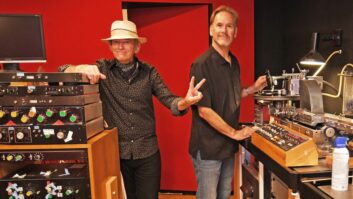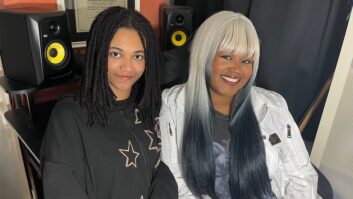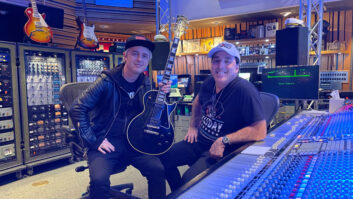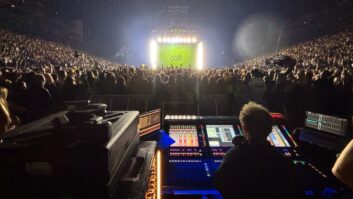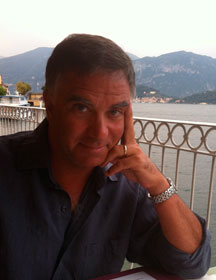
George Walker Petit
In his own words, producer/engineer George Walker Petit shares some details about how he approached his mixes for the Drew Zingg album, mixing strictly in the digital domain to further enhance and flesh out the analog characteristics of the recording and overdub sessions.—Ed.
[After] we left Oliver Leiber’s Doguehouse studio [where the rhythm section recorded all of its tracks], I took the hard drives back to New York City to my studio [Petit Jazz] and started doing some of the editorial work and figuring out if we needed any additional tracks. I then sent rough mixes out to Drew in San Francisco and together we chose the songs that would need overdubs, if any. I donned the producer hat again at that point: “Does this song need some percussion or does it need an acoustic rhythm part?” But the [underlying] credo was always, “Let’s not overproduce it. Anything that isn’t necessary, that doesn’t add to the song, let’s not record it – in fact, let’s just get rid of anything ‘extra’.”

Petit Jazz mix room
I edited and mixed the whole thing at Petit Jazz. We had all the music on a massive hard drive, all 12 tunes. So after I got home, I set about the task of figuring out how I wanted to mix this, what tools I wanted to mix it with, how long it might take…how much coffee…
Before I even touched any reverbs or any EQs or compression, or any other plug-in or outboard, I’d spend a tremendous amount of time listening; editing parts, making stuff work musically—and I’m a musician first, so that is of extreme importance to me. For example, anybody who’s a Steely Dan freak, sonically, has to have heard how all the parts work together so well—all complimentary pieces in an harmonic and rhythmic puzzle if you will. And if you’re into the larger orchestral [Pat] Metheny kind of stuff, it’s the same thing: a careful combination of many elements, all subtly treated. So I did a lot of editing and leveling before I did any real mixing—a lot of fader moves and panning, experimentation and rough mixing to settle on an approach to the whole record.
I’m a big proponent of getting microscopic with the panning and depth of field in headphones, so I bought two pairs of Grado headphones with the help of John Chen over at Grado. I picked their PS1000s and their 500s. And then I hooked up with SPL, whose gear turned out to be a huge help in the studio. Amongst other things, like their plug-ins and outboard EQs and stuff, SPL makes a headphone amplifier called the Phonitor and a monitor selector called the 2Control. I spoke with Marty Druckman [CEO at Network Pro Marketing Inc.] and said, “I want to do a lot of really close, critical listening to mix this record.” He sent me a Phonitor and a 2Control, and for every mix, I would do some heavy tweaking in that environment. That system helped me get to that level of precision and focus that I was after. SPL and Grado together make a pretty strong team.

Sonodyne SM100Ak
For monitoring on speakers in my studio, I use Dynaudio BM15A and BM12A. I’ve been with Dyn’s forever, basically. I feel really comfy with them. I also wanted to get a set that sounded completely different and found these wonderful monitors made in India called Sonodyne—their SM100K models, half the size of the Dyn’s, and they just sound great. Those, plus the Grado’s, and I had all the references that I wanted.
I came up as a second assistant engineer in analog rooms, so I’m one of those guys that generally prefers analog. But in the last two years I’ve noticed that there are a couple of companies that are making plug-ins that are so solid, are so great-sounding, that I think they’re worth giving a try. We recorded really strong basic tracks, right? So I thought, “What I’m trying to do here is not create anything that’s not already there. Whatever I use, I want to use subtly. So maybe I can find a way to employ some of these plug-ins.” Some turned out to be all.
Part of my intention [in mixing] was to make sure that you couldn’t hear what I was doing—I didn’t want to hear a big delay, I didn’t want to hear incredible amounts of compression [or] reverb. That said, I used multiple instances of plug-ins on each of these tunes! But I wanted them to be used in a subtle way. Transparency, “naturalness”, I guess. I don’t want folks to hear the mix; I want them to hear the music.
For instance, if I was going to use an EQ or a compressor on Will [Lee]’s bass, I’d audition a few plug-in EQs or compressors before I decided which one I was going to use. So it was a painstaking process, but I didn’t want to hear the compression on Will’s bass; I wanted to hear Will’s bass. Will is such a monster player with such a sound…I didn’t want to change anything. Same with Vinnie [Colaiuta]; I didn’t want to hear the reverberant program on the drum kit or the kit sound different than what Vinnie likes to hear; I wanted to hear the space that I created become a part of the drum sound, a part of the band sound. I wanted things to sound natural. No hyper-reality. Why try to “fix” the performances of these guys? What could I possibly “fix” or “change”?

UAD Lexicon 224 plug-in
The Universal Audio UAD Powered Plug-Ins stood out to me. Eighty percent of the plug-ins [that I used] are UAD. The reverbs are UAD —usually their 224 or their plate reverbs, like the 160. The rest of the plug-ins were either SSL Duende or the occasional surgical EQ from Sonnox, or something like that. I try to work in a subtractive manner, rather than an additive manner. So I’ll pull stuff out of the sound to clear it up rather than boost something. But again, I really try not to use anything if possible; I don’t just jump to some corrective tool before trying to fit things in a mix without going to processing.
I connected many years ago with a lovely fellow named Don Wershba, Senior Vice President at Solid State Logic here in the U.S. When I was a young engineer coming up, Don was one of the full-on engineers whose shoulders I used to look over…I stole regularly from Don! I learned a ton from watching Don work…he’s a real gent and is super knowledgeable about music, engineering and the business surrounding all of it. He’s also a blast to just hang out with.
I had installed a mix room in my apartment here in NYC and had taken a lot of time with treatment, configuration and such, and knew that I would need a small but really powerful and flexible nerve center for the room. So when I started gearing up, I was seriously looking at a few different controllers and digital desks and landed on the SSL Nucleus, which stopped my search. So I contacted Don, who introduced me to Fadi Hayek, also at SSL, and they invited me downtown for a demo of the Nucleus. Love at first sight!

SSL Nucleus Multi-DAW Controller
This thing has SSL preamps in it, it has a fantastic converter section, and it’s a Solid State Logic desk: It looks like one, acts like one, feels like one, its automation is fantastic, and you can basically get rid of your QWERTY keyboard and run your entire session, once you’ve programmed how you want your Nucleus to behave, right from the Nucleus. You can access any plug-in, any parameter from the Nucleus. It acts as an interface between the engineer and the DAW like no other interface I’ve ever used, it’s like a clean conduit. It’s really an elegant little piece. So I did the entire mix with the Nucleus. And, the entire mix in the box without anything “external” across the 2-bus at all. It is all in the box, thanks to SSL, SPL and UAD.
Sometime after [the album] was mastered [by Oscar Zambrano of Zampol Productions] and released, Don and I had a lunch in Midtown. He was blown away that I did it all in the box [and] couldn’t believe it at first. That kind of praise from one’s trusted mentor has a lot of weight. I hear now that Carl Tatz is using the CD as his in-studio demo for his amazing PhantomFocus™ system. Wow, man, that’s huge praise.
So I’m staying in the box…at least in my own mix room. I’m really happy about the way this record sounds. A lot of folks are weighing in lately and loving the vibe, which makes me very happy.
